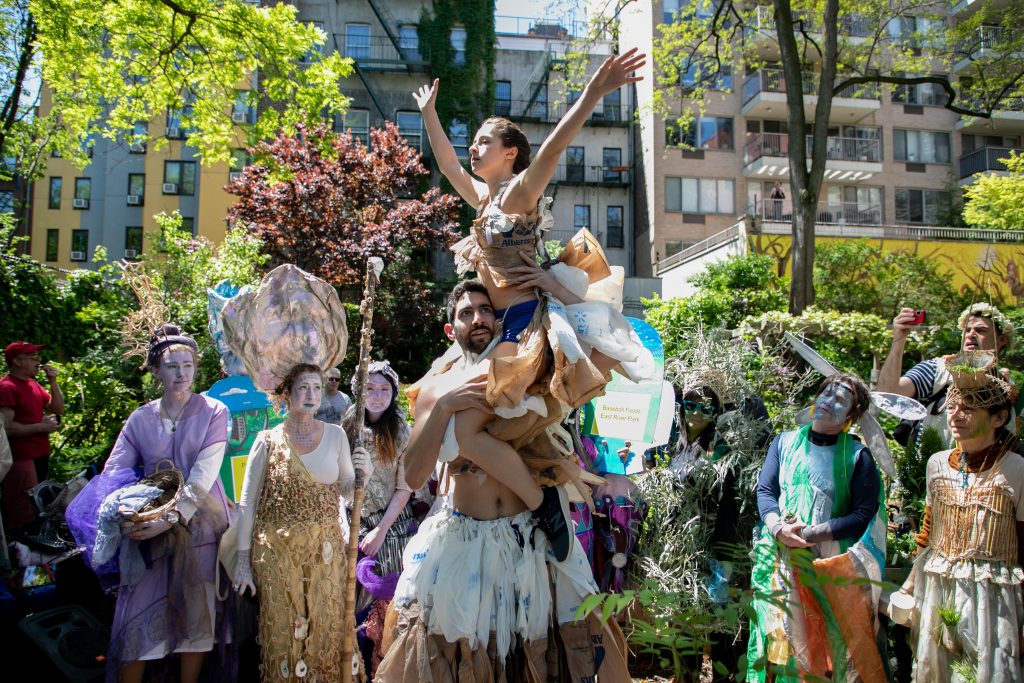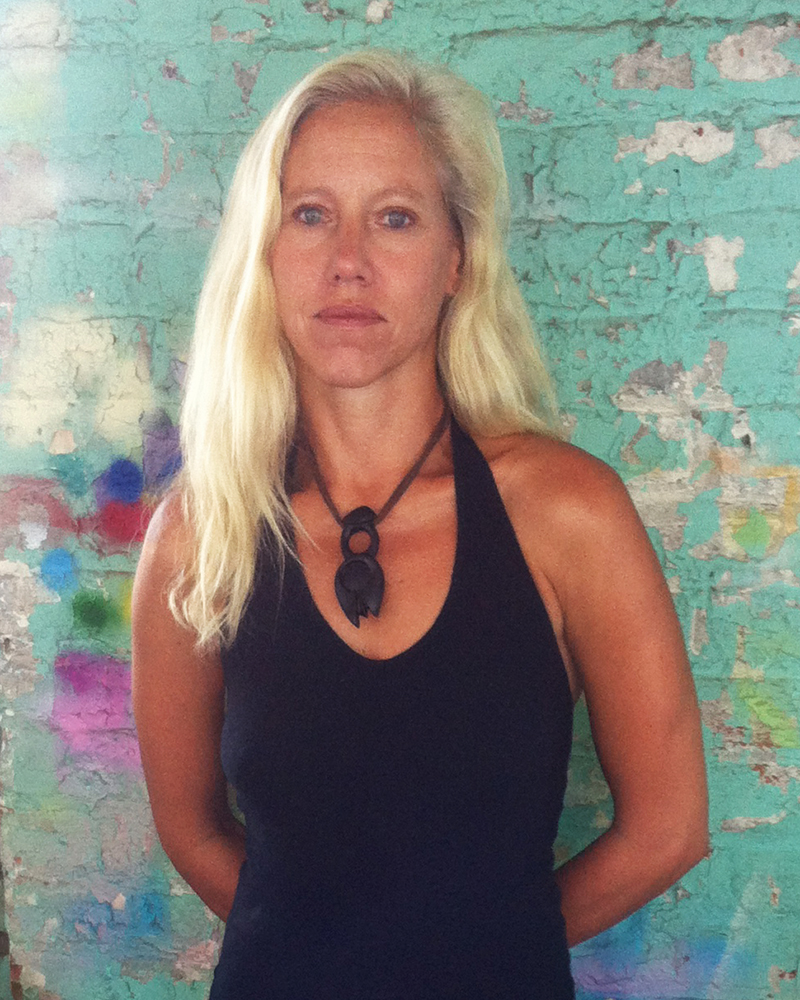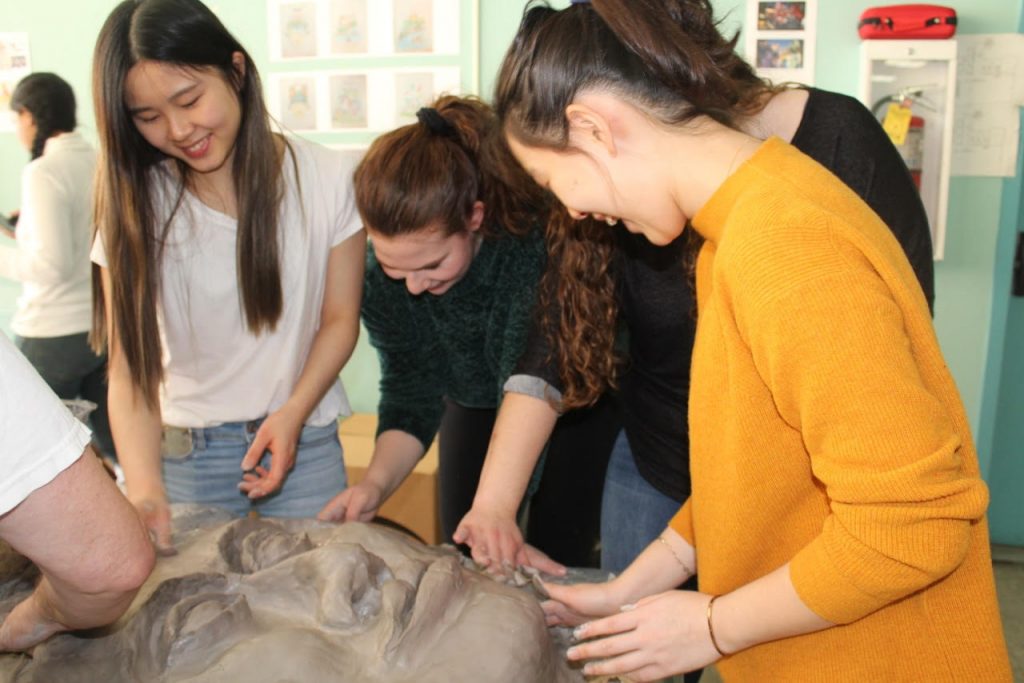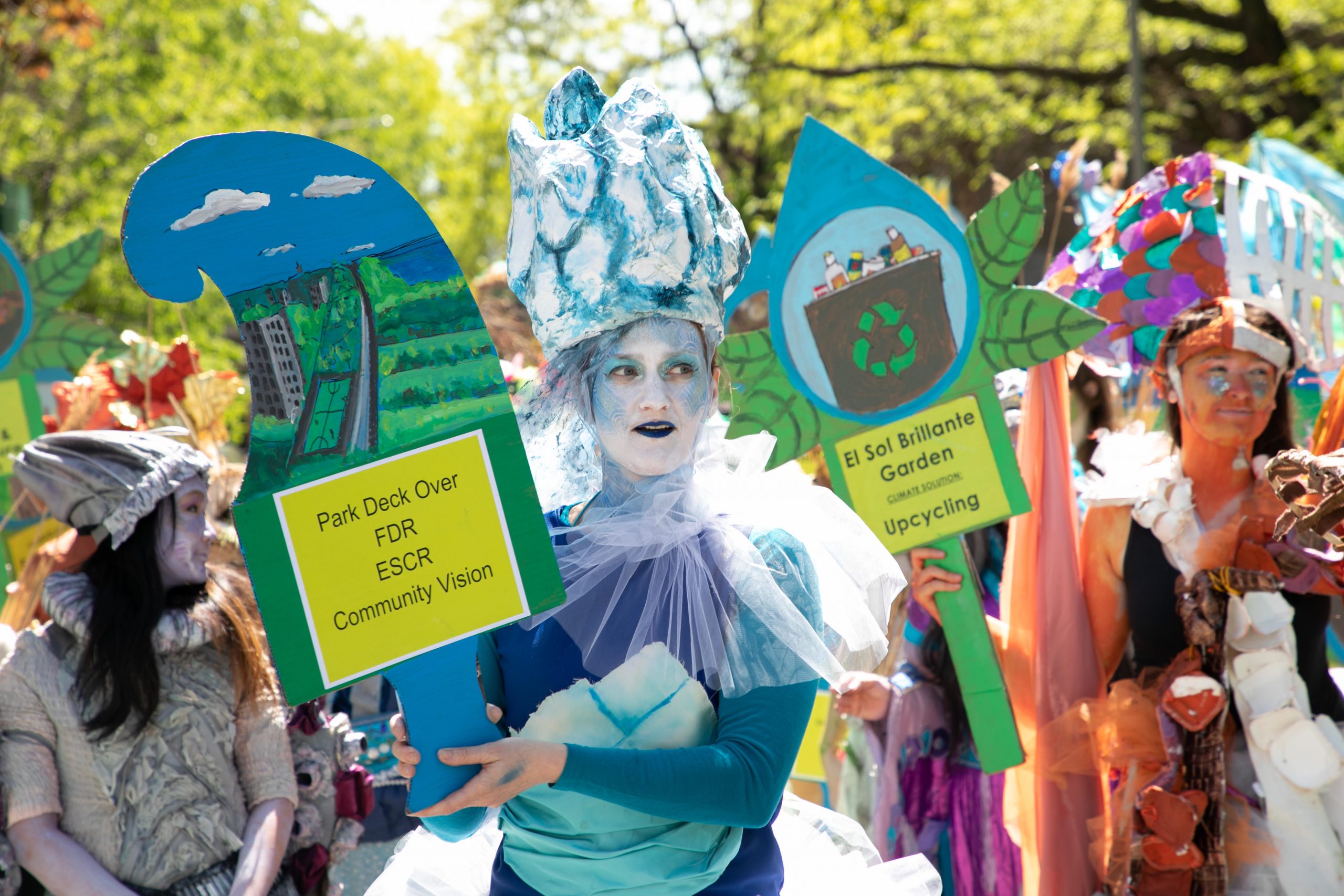The Village Sun recently caught up with Felicia Young, founder and director of Earth Celebrations, and asked her about this spring’s upcoming Ecological City: Procession for Climate Solutions.
Why and how did you start Earth Celebrations?
I began to create large-scale theatrical pageants — processions with site performances — since that art form worked well for community collaboration and public action on local issues.
I was disillusioned with the commercial art world and was seeking an art form that could engage a diverse community through a collaborative process and function for a social purpose that could generate impact.
Much of my inspiration for the theatrical pageant art form comes from India, where my mother is from, as well as the social-reform pageants cultivated by settlement houses on the Lower East Side in the early 1900s.
I was living near the former site of Adam Purple’s Garden of Eden, which was bulldozed for development in 1986. Realizing that the same fate could affect more than 55 magnificent gardens throughout the neighborhood, I had the idea to apply the community pageant strategy to build an effort to preserve the community gardens.
I reached out to local gardeners, artists, youth, schools, churches and community centers to organize the Procession To Save Our Gardens in 1991. Months of community art-making and workshops creating puppets, costumes and performances culminated in the eight-hour-long Procession to Save Our Gardens, which visited 45 gardens.

It grew into an annual community art and advocacy project for 15 years, building a local and then citywide coalition effort to preserve the community gardens.
Through the artistic pageants, along with the coalition effort, an effective broad-based effort led to the preservation of hundreds of community gardens on the Lower East Side and throughout New York City.
How are the arts effective in mobilizing action and generating change on issues?
The arts have an ability to inspire and engage people to cultivate an emotional connection to their environment and natural world, as well as issues and ideas, and through that deep connection take action to generate change.
Earth Celebrations has applied the arts to engage communities to explore local sites, gardens, parks and rivers — the Hudson and East rivers — within a neighborhood that are embedded with history, issues and struggles.
The arts provide an accessible and inspiring entry point for residents, youth, organizations and stakeholders to participate and work together creatively as a neighborhood for solutions to issues impacting the community. Through the process of creating visual art, performance, dance, theater and poetry, participants develop a deeper understanding of the issues and solutions. Then, through the public enactment of pageant, participants take action, communicate to a larger public and affirm new narratives and visions for the community.

We can apply these creative strategies to the global climate crisis through effective actions that can be taken locally. The arts offer an inspiring method of engagement where we can cultivate a greater visceral connection to our natural world and mobilize action for its preservation and solutions for a sustainable future.
Tell us about this year’s Ecological City: Procession for Climate Solutions that you are working on now.
I initiated the Ecological City: Procession for Climate Solutions, which is now in its third year for 2020, because I recognized it was a pivotal time in the East Village and Lower East Side, with a myriad of inspiring climate solutions and sustainability initiatives throughout the community gardens, neighborhood and waterfront that were underway, yet not acknowledged as an inspiring cohesive model of a sustainable urban ecosystem.

After Hurricane Sandy, the gardens that had been preserved proved themselves in a new role for climate resiliency as they absorbed the floodwater. A federal grant of Sandy relief funds enabled the gardens to expand and implement green infrastructure and climate resiliency projects. Yet the city still had not acknowledged the importance of these gardens within the city — for flood and runoff mitigation — and carbon sequestration solutions to the global climate challenges and the commitment to keep global warming temperature under 1.5 Celsius.
Also, throughout the neighborhood sustainability projects — such as green roofs — rooftop bee farming and solar energy microgrids had developed. On the waterfront, the E.S.C.R. (East Side Coastal Resiliency) waterfront redevelopment plan was in process. I saw how these climate resiliency and sustainability solutions functioned together as an inspiring model for an urban sustainable ecosystem, and that by connecting these initiatives through the Procession for Climate Solutions, the community could effectively move action on all the initiatives forward as a cohesive vision.
Residents, youth and organizations are invited to join the effort and participate through Ecological City: Art and Climate Solutions Workshops from Feb. 29 to May 6, led by our artists-in-residence and environmental experts.
Participants collaborate creating visual art, giant puppets, costumes and performances exploring local gardens, neighborhood and waterfront sites and their climate solution initiatives.

Participants learn to grow costumes and sculptures with mycelium (mushrooms root) into a structural, biodegradable material that is grown into various forms; they will learn how to make kombucha (fermented mushroom tea) into a leathery textile that will be integrated into a zero-waste costume, and use seaweed to create a costume representing carbon sequestration. We also use natural dyes and make paint from fruits, vegetables and plants. We are integrating sustainable, natural and recycled materials and practices into what we create.
The visual arts and performance works created through workshops at our space at the Sixth Street Community Center, at 638 E. Sixth St. — in addition to collaborations with partner organizations, such as GOLES, Studio 55C, Children’s Workshop School, Lower Eastside Girls Club and University Settlement (P.S. 63) — will be featured in the culminating Ecological City: Procession for Climate Solutions on Sat., May 9.
The urban ecological pilgrimage will weave throughout the gardens, neighborhood and waterfront for six hours, visiting 20 sites for performances celebrating the inspiring array of climate solution initiatives that are living and thriving throughout the East Village and Lower East Side.
For more about Earth Celebrations and getting involved with the Ecological City: Procession for Climate Solutions, click here.


This is amazing! We in Madison, WI are at the beginning of creating something like this, and it’s awesome to see what we can aspire to. Are there any videos of your processions?
Hi Phyllis, Thank you. Please see https://www.earthcelebrations.com for many videos and sliideshows for inspiration. Best, Felicia Young
This fabulous! Keep up the great work!